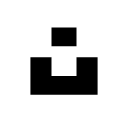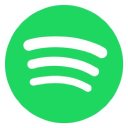
How I Launched An Automatic Time-Tracking App
Hello! Who are you and what business did you start?
Hello fellow makers! My name is Stas Moor and I am the founder of Klokki — an automatic time-tracking Mac app for freelancers and us — makers.
The product launched almost a year ago with the intent to deliver a transparent experience for everyone who has value in tracking time but always hated doing it because of how cumbersome it usually is.
Our approach is simple — we give full control to the user and get out of the way. The only thing we ask for is to define a few trigger-rules that will fit your workflow. From there on Klokki takes over and runs automatically. We believe that this way we strike a good balance between offering a manual solution and something that tracks everything you are doing, even the things you don’t care about. Customer feedback showed us that we are on the right path with our approach, even though we still have a lot to ship and improve.
We sell Klokki through our website as a one-time purchase. That includes 1-year of updates and can be used forever. Besides that, we also offer a Slim version of the Mac App Store for free, but without the automatic time-tracking and an In-App-Purchase. The combined income of both apps is around $350/month. In that sense, we still have ways to go but are very grateful to our awesome customers who already believed in us.

What's your backstory and how did you come up with the idea?
My background is fully design-based but to explain to you how it came to that, I have to throw you back to the year 2005. 15 years ago I was a teenager who had no clue what to do with his life, except for playing video games. I didn’t have the best grades in school and was basically just flowing along the stream of life. And I am pretty sure that the path I was on would have led me to a very sad outcome, if not for one thing that changed it all for me. I was introduced to Photoshop and the world of graphic design. After that, I started looking for different tutorials and learn as much as I could. I was hooked and from that point on I knew that the only thing I wanted to do in life is to design.
Fast forward to one other special event in my life — the release of the App Store in 2008. I was already fascinated by the iPhone and Apple in general, but the possibility to create an app and then easily release it to the public — game-changing. From that moment on I set the goal to create my own apps. Many years, apps, learnings, and failures have followed to finally gather some experience that would open up the possibility to take on a project like Klokki.
Now, here comes the twist… Klokki was initially released in 2018 under the name Timepal and was created by me and, at the time, a dear friend with whom we founded a company called Niftypals. Each of us brought his own expertise to the table, me — design and he — development, but most importantly the desire to finally fix the hassle with time-tracking, which both of us faced each day when doing freelance work. We bootstrapped the project for a year and lived the nomad lifestyle. :)
But as you might have guessed by now, we split a year later after the initial launch. That was probably the most earth-shaking moment of my life because not only did it mean the end of the project but also losing a very important relationship. But I needed to decide on how to proceed. All I knew is that I believe in the product and want to continue making it. In the end, we agreed on continuing the project separately, which is by far not the best choice to make, but that was the only way I could imagine moving forward. You are probably wondering what the reason to split was, right? Well, simple — human change and grow apart. Further down below, I will go more in detail on what learnings I took from that experience.
So there I was, not having the needed skills to continue the further development of the product, but still believing in the product itself. I had 1.5 months to completely relaunch the app, create a new identity for it, design the app icon, find a new name with an available domain, design and build a site, figure out how to host the site, but most importantly find a partner that can support the development of the app. It was a very intense time for me, but in early May 2019, we successfully launched Klokki. I learned so much in those 1.5 months, it’s crazy to reflect on it now. I guess that was the proof I needed to believe that I can handle it and move the project further.
I am very thankful to my wife, as she had always supported me, especially at the time after the company-split, even though we were running out of money and had to live with the parents for a few months, to lower our expenses. So if you are thinking about taking on a bootstrapping path to building a company/product, it’s incredibly important that your life-partner is in the same boat with you. Otherwise, you can risk losing someone you love.
Take us through the process of designing, prototyping, and manufacturing your first product.
The process to create the product included several steps. First, and I think the most important step is to identify the problem. I am a big believer that you actually have to fully live and understand the problem before trying to solve it. So being a freelancer myself, I faced the issue of forgetting to start and pause the timer multiple times a day. The answer was to ship a product that was not only a bit better but actually gets into the core and provides a solution that is context-based. By that I mean, why can’t the timer just start as soon as I open up Figma or a site or a specific file that I am working on? That’s how we defined the problem and a possible solution.
Don’t fall for the hype around starting a “business” — be smart about it, because it’s not going to be easy.
After that, we listed down all the basic features a time-tracking app needs to have and started to sketch… a lot. We researched our competitors, saw their takes on things, marked their flaws and tried to come up with a better solution. In parallel, it is also good to try and design a first take of the product, just to start getting a feeling of how the app will eventually look like and live inside a certain eco-system (in our case — macOS).
As soon as we’ve built the alpha version of the app, that was still very rough and didn’t have all the features, we started to invite a close group of people that were also freelancers and wanted to find a good time-tracking solution. Gathering their feedback helped us sort out some of the mistakes that we’ve made. Therefore, always include other people early on to validate your initial assumptions.
I remember the moment when we finally built the functionality to create time-tracking rules. The first time when I defined a rule that stated to start tracking as soon as I open up sketch and the file I was working in. To then see the timer automatically start as soon as I did the defined action — it was magical. That was probably the moment I knew that we have created something very special, even though it was still buggy as hell. :)
See below the early design of the Timer-window. :)

Describe the process of launching the business.
By the time we were getting close to reaching the Beta-phase, we started inviting people to sign-up for it. In the end, we had a list of over 600 people who wanted to participate in testing the Beta. We didn’t anticipate it to be so many, but with time learned that only 10% were actually using the beta. Therefore, bear in mind that not everyone who signs-up for your product will also give it a go.
It took us over a year to fully develop the app and launch it in late November of 2018.
And as I said before, it was fully bootstrapped. So it would have been impossible to get this far if we didn’t plan in advance. Both of us worked hard to save some money, to then have the “privilege” to not have a job for a while. That, plus a discipline to spend money only on the important things.
The launch itself went alright, we even turned some of the beta-testers into paying customers. We offered a special discount-deal for them, to give back and to show that we appreciated their help. After that, the first few weeks were kind of quiet, we got some requests here and there but nothing major.
Our mistake was that we didn’t surround ourselves with the right audience while building the product. We made the same mistake as thousands of makers have made before us — we only focused on building the product and not thinking ahead. But then, one day we saw a crazy visitors spike on our website. All of the traffic came from siteInspire — our site got featured and we were incredibly happy. That showed the importance to invest the time into building a beautiful site for your product. Because it not only will present your product in a good matter but also might bring you a lot of visitors, just because they want to check out your site.
That was the site. 👇 The headline copy was a big mistake. 🤦♂️

After the split, when I launched Klokki, I tried to sort out some of the mistakes that were made before. I was fortunate to find an awesome community of makers — Makerlog (made by Sergio Mattei). They gave me the needed encouragement and support to get the word out. I will never forget that and am forever grateful!
A Product Hunt launch followed, which I planned way ahead. I designed the right screenshots, created an animated gif to put as a thumbnail, prepared an explanatory first comment, and pushed at midnight San Franciso time. All of those things are very important for a PH launch, but what is even more important is what’s ahead. Because a PH launch is a 24h battle — answering all the comments, attract new visitors and so on. Sadly I only managed to fight for 20h, and maybe that’s why I didn’t finish first. But I was still very proud of Klokki that it took the 2nd place that day. It gave the product the push it needed and attracted many new users.
Since launch, what has worked to attract and retain customers?
As already stated above, Product Hunt and website featuring have worked very well for me to attract new visitors and users. But both approaches have the downside of dying out at some point. There is one more thing which I think is contributing to a certain growth as well, and that is a good customer relationship. My goal was always to help our customers as much as I can and be as transparent with them as I can. I think that led to a certain trust and people started sharing their Klokki experience with others. And that is not something you can force or buy.
If you are starting out, then save some money first so you have the “freedom” to not worry about money for a while. Or get a freelance gig to cover the basic expenses.
But marketing is still something I am struggling with and trying to understand. I tried different kinds of Ads on different services. But it seems that Ads can only work if you put a ton of money in there, and I guess that even then there is no reassurance that it works out. The current plan is to build out social media by delivering useful content to people. Let’s see how that goes, but I know for sure that it won’t be easy.
So if you have a suggestion for me or even a little tip on how to bring Klokki in front of more people, please be so kind and approach me. I will highly appreciate your support! Thank you in advance.
How are you doing today and what does the future look like?
2019 was a year of ups and downs but towards the end of the year we picked up some speed again. In December Apple put our Slim version of Klokki into their “Apps we love right now” section. That gave us great momentum and happened right after we introduced an In-App-Purchase inside of it. So we were quite happy that another source of income has opened up. For those who are interested in knowing what an Apple featuring looks like in numbers, here there are.

Overall we got 7000 downloads, which are slowly converting and purchasing the Add-Ons that we are offering inside the app. In that month of being featured the app went from bringing $0 to $400, just by offering a small Add-On for $2.99.
Besides that, I recently rebuilt and redesigned our website for Klokki to get some traction again and to validate some of my assumptions. So that change alone has brought us, 1.3k new visitors, in one week. I am sure that for many it’s less than they get in a day, but for us, it’s a step forward. :)
I feel like I am starting to find a good balance juggling between making the product and getting the word out. As anticipated, it comes down to gathering experience and finding a process that fits you. It helped me to pick certain days and assign specific categories of tasks to those days. That way my brain doesn’t take on the first task that it sees.
We want to make a big leap forward this year and have set ourselves some ambitious goals, like delivering an iOS app and syncing between different devices (which will be quite a “fun” challenge). Our site offers a public roadmap, for everyone who is interested in seeing where we are headed. Stay tuned and wish us luck. :)
Through starting the business, have you learned anything particularly helpful or advantageous?
On this question, I would like to reflect on making the decision to build a start-up with someone you know. Be it a close friend, a relative, a colleague or a life-partner. Before going down that path think about the following things:
Don’t rule out the worst-case scenario, play it out in your head. Talk about that with the person you want to start the business with. Define rules on how to deal in such an event, write them down, add your signatures to it and hope that you will never need to use it but be at ease in case it’s needed after all.
Don’t think that the second person will always stay the same. Either accept them as they are or if something is bothering you then talk about it openly but with respect. If both partners have full respect for each other, then intense discussions will always lead to a balanced solution and a fair outcome.
Weigh out in advance if some parts of the other person believe don’t align with yours. It’s simple, those things won’t go away but will bother you more and more until you have enough. Trying to change the other person, will most likely fail. So think twice before taking on a journey and invest time and money into a collaboration.
I guess that there is no golden rule for how to pick a co-founder. That’s why it’s very important to listen to your gut feeling. Cliche, but very true.
What platform/tools do you use for your business?
Without this tool, my brain would probably explode. I use it for everything — plan, manage, drop ideas, bookmark, share, and so much more. We use it to manage our backlog, sprints, feature requests and wiki of Klokki. I highly recommend it.
I started to build all of my sites using Webflow. It saves me a lot of time and stress, that I would otherwise have. If you know the basics of HTML/CSS, then it will be quite easy for you to get started (if not, also not a big problem).
Well, obviously, as a designer I need a design tool and Figma became my only choice. The team there just nailed it, everything about it is on point. And the crazy part is — you can use it for free. 🤯
And of course, I am also using our own app. If I am working — I am tracking (or better said, it tracks for me). It helps me understand how productive I actually am during the day and validate how much overall time went into a certain task. Besides that, it’s the best way to find flaws and think of new ideas on how to improve the app.
I am also planning to integrate Roadmap into my workflow, to better plan for the future, in a more visualized way. I think that a timeline view is the best choice for that.
What have been the most influential books, podcasts, or other resources?
There are no books that, for me, stood out by a lot. I believe that everything we read serves as a trigger to think further and make up our minds about it. Therefore, read anything that seems to be interesting to you and if it turns out to be not the case, stop reading it and move on.
But I listen to podcasts like The Indie Hackers Podcast and Design Details. Both deliver great and useful content on topics I am most interested in at the moment. Both easy and fun to listen to.
Advice for other entrepreneurs who want to get started or are just starting out?
Don’t fall for the hype around starting a “business” — be smart about it, because it’s not going to be easy.
If you are starting out, then save some money first so you have the “freedom” to not worry about money for a while. Or get a freelance gig to cover the basic expenses and work on your venture on aside. And when it comes down to making something, then try solving your own problem first. That way you can relate to it a lot more and therefore have an “advantage” in solving it.
But most importantly — believe in yourself and the things you are making!
There is a high chance that you will face people who will question your decision to create your own business. Don’t think about it too much, do your thing.
Are you looking to hire for certain positions right now?
I am not looking to hire at the moment, as the business is not at that point yet.
But I am open to the possibility to partner up with a strong Mac-Dev. So if you are interested, my DMs are open. :)
Where can we go to learn more?
- Klokki website
- Klokki Twitter
- Personal site
- Personal Twitter — Drop by to say “hi” :)
If you have any questions or comments, drop a comment below!

Download the report and join our email newsletter packed with business ideas and money-making opportunities, backed by real-life case studies.

Download the report and join our email newsletter packed with business ideas and money-making opportunities, backed by real-life case studies.

Download the report and join our email newsletter packed with business ideas and money-making opportunities, backed by real-life case studies.

Download the report and join our email newsletter packed with business ideas and money-making opportunities, backed by real-life case studies.

Download the report and join our email newsletter packed with business ideas and money-making opportunities, backed by real-life case studies.

Download the report and join our email newsletter packed with business ideas and money-making opportunities, backed by real-life case studies.

Download the report and join our email newsletter packed with business ideas and money-making opportunities, backed by real-life case studies.

Download the report and join our email newsletter packed with business ideas and money-making opportunities, backed by real-life case studies.



















